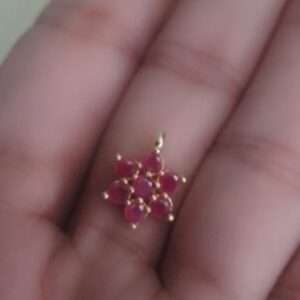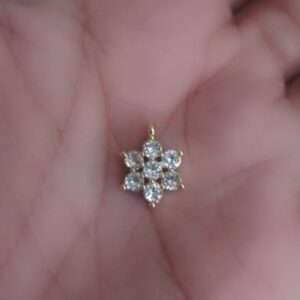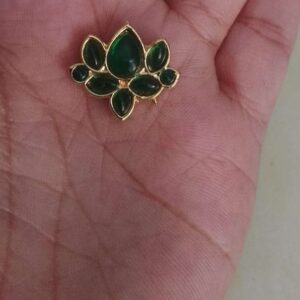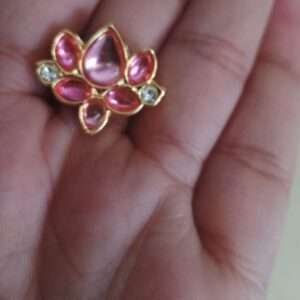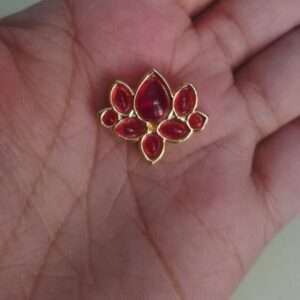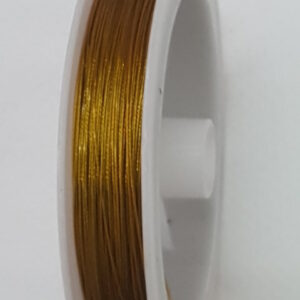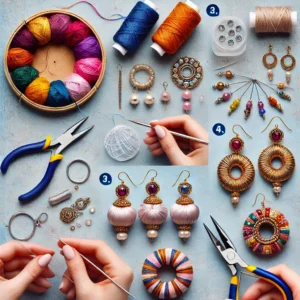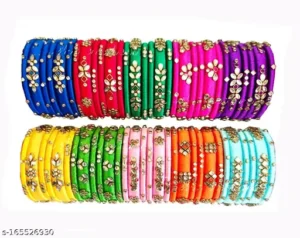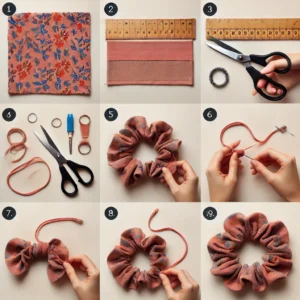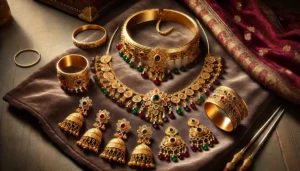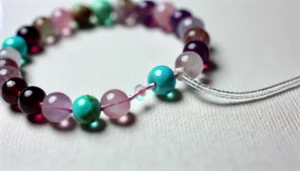Home » Posts tagged 'Ethical Fashion'
Tag Archives: Ethical Fashion
Why handmade accessories are the next big thing in fashion – and you won’t believe the impact!
Explore how handmade accessories are transforming fashion with unique designs and sustainable practices. Learn why they are the ultimate style statement.
Handmade accessories are taking the fashion world by storm, offering a fresh alternative to mass-produced items that dominate the market. These one-of-a-kind pieces—ranging from hairpins and headbands to anklets and brooches—provide a personalized touch that is becoming increasingly rare in today’s fashion landscape. As more consumers seek unique ways to express themselves, the demand for handcrafted accessories continues to grow, underscoring a broader movement toward individuality, quality, and sustainable fashion choices.
The Rise of Handmade Accessories in Modern Fashion
Handmade accessories have become a symbol of authenticity and originality in a fashion market flooded with uniformity. Unlike factory-made items, these accessories are crafted with meticulous attention to detail and infused with the artist’s creative spirit. Each piece tells a story, making it more than just an accessory but a wearable piece of art. Fashion historian Linda Larson explained that “handmade accessories connect the wearer with the creator’s vision, offering a sense of connection that mass-produced items simply cannot replicate.”
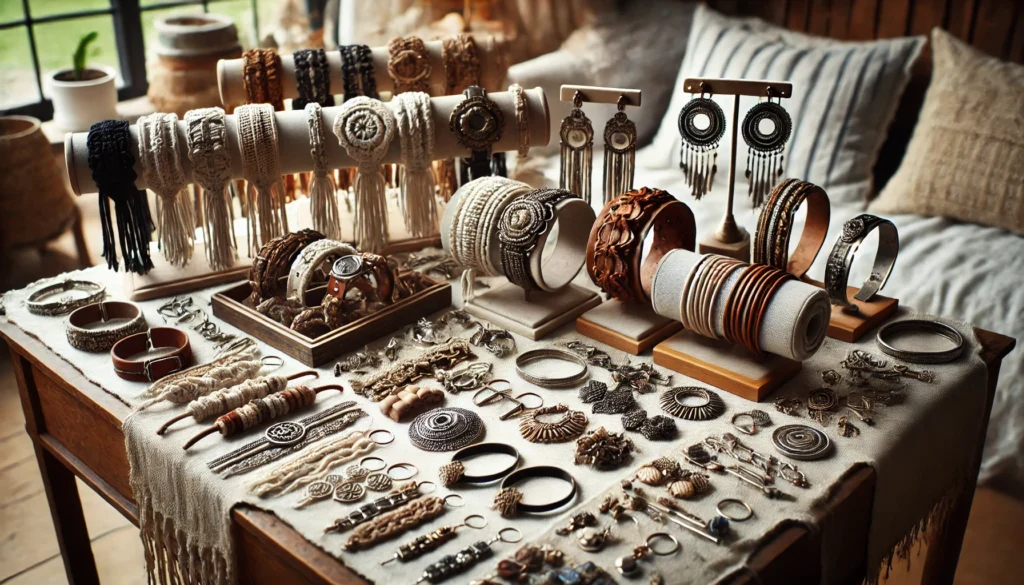
The rise in popularity of handmade accessories also reflects a growing rejection of fast fashion’s ethical and environmental implications. With consumers becoming more aware of the impact of their choices, there is a clear shift towards slow fashion, which values craftsmanship, sustainability, and ethical production. Artisanal brands and independent designers are leading this change, creating accessories that are both stylish and sustainable.
Why Consumers Are Flocking to Handmade Accessories
The appeal of handmade accessories lies in their uniqueness and the ability to customize them according to personal preferences. Many artisans offer bespoke services, allowing customers to choose specific colors, materials, and designs, resulting in a product that perfectly matches their style. This level of personalization is rarely found in mass-produced goods and is a key reason why handmade accessories are becoming more popular.
Additionally, handmade accessories often feature high-quality, durable materials. Unlike their cheaper, mass-produced counterparts, which are prone to wear and tear, handmade items are built to last. Many artisans use sustainable and ethically sourced materials, such as recycled metals, natural fabrics, or even upcycled components. This commitment to quality and sustainability adds to the allure of handmade accessories.
Craftsmanship and Artistry: The Essence of Handmade Accessories
At the heart of handmade accessories is the dedication and skill of the artisans who create them. Each piece requires hours, sometimes even days, of labor-intensive work. The artistry involved is what sets handmade accessories apart from their mass-produced counterparts. Jewelry designer Samira Thompson noted that “the time and skill invested in handmade accessories give them a soul—a story that the wearer carries with them.”
The market for handmade accessories includes a wide range of items, such as macramé earrings, crochet hairbands, leather cuffs, and metal brooches. Each accessory type reflects different craft techniques and materials, showcasing the rich diversity of artisanal work. As a result, handmade accessories appeal to a broad spectrum of consumers, from those who prefer minimalist styles to those seeking bold, statement pieces.
The Market Potential for Handmade Accessories
Experts believe that the market for handmade accessories will continue to grow as consumers increasingly prioritize sustainability, quality, and individuality. The rise of e-commerce platforms and social media has also provided artisans with greater visibility and access to global markets. Sites like Etsy, Instagram, and Pinterest have become crucial tools for artisans to showcase their work, connect with customers, and build their brands.
According to fashion marketing strategist Julia Reed, “the appeal of handmade accessories is more than just their aesthetic value. It’s about owning something that’s truly yours—an item that no one else has. This unique selling point is what makes handmade accessories a promising niche in the fashion industry.”
The Future of Fashion is Handmade
The trend toward handmade accessories signals a shift in consumer values, from quantity to quality and from conformity to individuality. As more people seek meaningful, sustainable, and unique fashion choices, handmade accessories are poised to become a staple in modern wardrobes. This growing demand will likely lead to more innovation and diversity in designs, ensuring that the future of fashion remains vibrant, sustainable, and deeply personal.
Why textile and fabric-based jewelry is the hottest new trend in sustainable fashion!
Discover how textile and fabric-based jewelry is revolutionizing sustainable fashion. Learn how these unique pieces are crafted and their growing appeal.
Textile and fabric-based jewelry is redefining sustainable fashion, bringing creativity, innovation, and eco-consciousness together in an unexpected and captivating way. Moving beyond traditional metal and gemstone options, artisans are turning to soft materials like cotton, jute, felt, and recycled fabrics to create stunning, lightweight jewelry that is both stylish and sustainable. With a growing emphasis on environmental responsibility in the fashion industry, fabric-based jewelry is emerging as a unique and ethical alternative, appealing to a diverse audience seeking distinctive fashion statements.
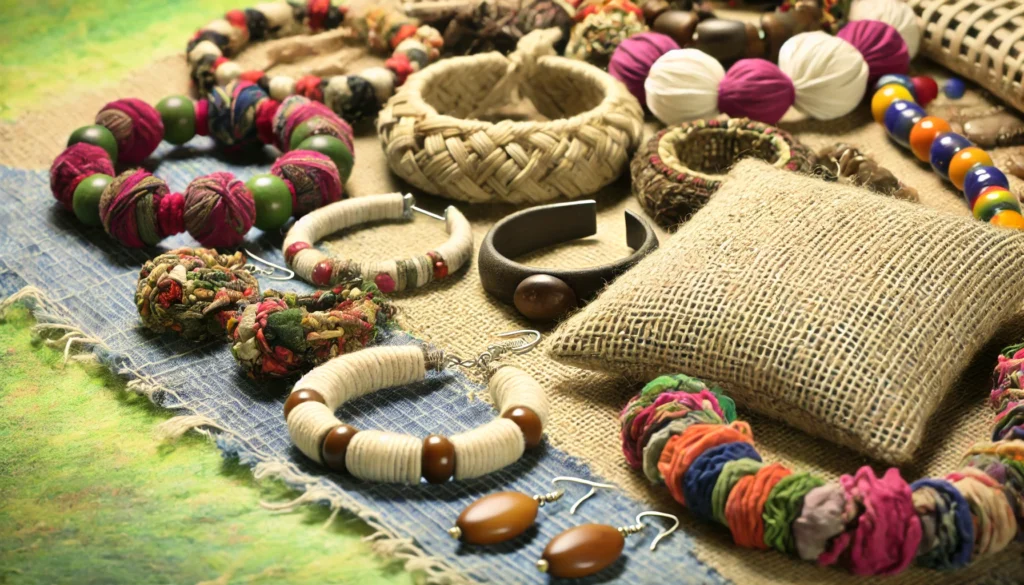
The Emergence of Textile and Fabric-Based Jewelry
The concept of textile and fabric-based jewelry is not entirely new; it draws inspiration from age-old practices where communities around the world used natural fibers and textiles to adorn themselves. However, in recent years, this type of jewelry has gained significant traction in mainstream fashion circles, thanks to the push for sustainability and ethical fashion. According to fashion historian Anita Patel, “fabric-based jewelry represents a shift towards valuing materials that are renewable, biodegradable, and have a lower carbon footprint.”
The versatility of textile jewelry is another reason for its rising popularity. From statement necklaces made of braided cotton to intricately woven jute earrings and patchwork fabric cuffs, these pieces offer endless design possibilities. The use of vibrant colors, unique textures, and innovative weaving techniques allows designers to craft accessories that are not only visually appealing but also rich in cultural significance.
How Textile and Fabric-Based Jewelry is Crafted
Creating fabric-based jewelry involves a blend of traditional craftsmanship and modern design techniques. Many artisans start by selecting high-quality, sustainable fabrics—such as organic cotton, hemp, silk, or even repurposed materials like denim or sari fabrics. These textiles are then cut, shaped, and treated to create various jewelry elements. Techniques like braiding, knotting, stitching, and embroidery are commonly used to give the pieces form and structure.
Textile jewelry often incorporates other sustainable materials such as wood, shells, or seeds to add depth and dimension. Designers might also use natural dyes and eco-friendly adhesives to ensure the final product is entirely sustainable. Jewelry designer and environmental advocate Sasha Morgan pointed out that “every step in the creation process of fabric-based jewelry, from material selection to finishing touches, is an opportunity to make a more sustainable choice.”
The Growing Appeal of Sustainable Jewelry
The demand for textile and fabric-based jewelry is driven by a growing desire for sustainable fashion. Today’s consumers are increasingly concerned about the environmental impact of their purchases and are opting for products that align with their values. Fabric-based jewelry fits perfectly within this mindset, offering a stylish yet conscious alternative to traditional jewelry.
Another key appeal of textile jewelry is its comfort and lightweight nature. Unlike heavy metal pieces, fabric-based jewelry can be worn for extended periods without discomfort. This quality makes it particularly popular for summer wear and casual styling, where comfort and style go hand-in-hand. Moreover, the customizable nature of textile jewelry means that pieces can be tailored to suit specific tastes or complement particular outfits, adding a unique touch to any wardrobe.
The Future of Fabric-Based Jewelry
Fashion industry experts believe that fabric-based jewelry has significant growth potential, especially as more consumers and brands embrace sustainable practices. The trend is also gaining momentum thanks to increased visibility on social media and e-commerce platforms, where independent artisans and small-scale designers showcase their creations to a global audience.
Ethical fashion consultant Monica Vance noted that “textile jewelry represents a convergence of art, culture, and sustainability—three elements that modern consumers find increasingly attractive.” She also emphasized that as fashion continues to evolve toward more sustainable practices, fabric-based jewelry will likely become a staple in the accessory market.
A New Era of Fashion Accessories
Textile and fabric-based jewelry is more than just a trend; it is a reflection of the changing values in fashion. As more people seek accessories that are not only beautiful but also ethical and sustainable, the appeal of fabric-based jewelry will continue to grow. With a focus on craftsmanship, innovation, and environmental responsibility, this unique form of jewelry is set to make a lasting impact on the fashion world.
Upcycled jewelry is taking over fashion – and here’s why you need to be a part of it!
Explore the growing trend of textile crafts and upcycled jewelry that blends sustainability with creativity. Learn how these unique pieces are reshaping fashion.
Textile crafts and upcycled jewelry are making waves in the fashion world, redefining sustainability with creativity and style. In a time when environmental consciousness is paramount, more consumers and designers are turning to upcycled jewelry crafted from recycled fabrics, old clothing, and discarded materials. This trend is not only eco-friendly but also offers a fresh take on fashion accessories, where each piece carries a story and a purpose. By merging traditional textile crafts with modern upcycling techniques, designers are creating unique jewelry that appeals to those who want to make a fashion statement with minimal environmental impact.
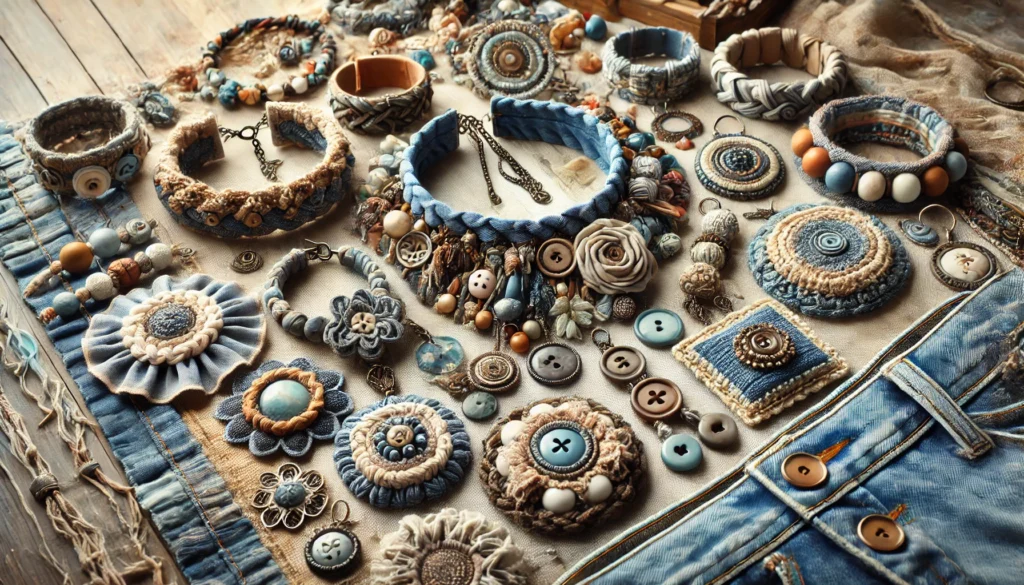
The Rise of Upcycled Jewelry in Sustainable Fashion
The concept of upcycled jewelry is gaining popularity as part of a broader movement toward sustainable fashion. Unlike traditional recycling, upcycling involves repurposing materials into new products with higher quality or artistic value. This approach allows designers to transform old fabrics, scraps, and discarded clothing into one-of-a-kind jewelry pieces that are both stylish and environmentally friendly. The use of textile crafts such as weaving, knitting, and crochet adds a rich, handmade touch to these pieces.
Fashion sustainability advocate Jenna Meyer noted that “upcycled jewelry is a revolutionary step in sustainable fashion. It’s about reimagining waste as a resource and creating something beautiful and meaningful out of it.” This philosophy resonates strongly with consumers who are becoming increasingly mindful of the environmental impact of their purchases.
How Upcycled Jewelry is Crafted
Creating upcycled jewelry from textiles and other materials involves a thoughtful and creative process. Designers begin by sourcing materials, such as fabric scraps, old denim, leather offcuts, or vintage lace, often collecting these from thrift stores, garment factories, or even their own closets. The next step involves deconstructing these materials and reimagining them into new forms. Techniques like weaving, braiding, sewing, and embroidery are commonly used to transform these discarded textiles into wearable art.
For example, an upcycled denim necklace might start with strips of old jeans braided together and adorned with beads or metal charms. A pair of earrings could be crafted from vintage lace, stiffened with eco-friendly solutions, and embellished with repurposed buttons or broken jewelry pieces. Jewelry designer Lara Thompson explained that “upcycling allows for an immense amount of creativity. Each piece is a challenge to see the potential in something discarded.”
The Growing Popularity of Upcycled Jewelry
Upcycled jewelry is gaining traction for several reasons. First, it aligns with the principles of sustainable fashion by reducing waste and minimizing the demand for new raw materials. This eco-friendly approach not only helps the environment but also encourages a shift away from the fast fashion model, which is notorious for its negative impact on the planet.
Second, upcycled jewelry offers a sense of uniqueness and exclusivity. Each piece is handmade and one-of-a-kind, providing consumers with a personal connection to their accessories. This individuality stands in stark contrast to mass-produced jewelry, where uniformity is the norm. Fashion influencer and sustainability advocate Mia Chen observed that “upcycled jewelry is for those who want to stand out and support ethical fashion. It tells a story that mass-produced items simply cannot.”
The Future of Textile Crafts and Upcycled Jewelry
Experts believe that upcycled jewelry will continue to grow in popularity as more consumers seek sustainable and ethically produced fashion. The versatility of textile crafts combined with the creativity of upcycling provides endless possibilities for innovation. Moreover, as the fashion industry grapples with the need for sustainable practices, upcycled jewelry is positioned as a forward-thinking solution.
Sustainable fashion consultant Nadia Patel stated that “upcycled jewelry is not just a trend; it’s a necessary evolution in the fashion industry. It challenges the traditional fashion cycle and introduces a new way of thinking about waste and design.” With more designers embracing upcycling and consumers supporting these initiatives, the future of textile crafts and upcycled jewelry looks promising.
Fashion with Purpose and Innovation
Textile crafts and upcycled jewelry represent a powerful fusion of sustainability and creativity, offering a fresh perspective on what fashion accessories can be. As the movement toward eco-conscious fashion grows stronger, upcycled jewelry will continue to shine as a meaningful and stylish alternative to traditional jewelry. For those looking to make a fashion statement that is both beautiful and impactful, upcycled jewelry provides the perfect opportunity.
